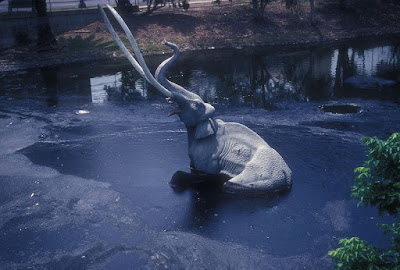Pit Stop at La Brea
When people say La Brea tar pits, they are in effect saying the tar tar pits because la brea is simply Spanish for "the tar". Also, it is not exactly tar, but rather natural asphalt. It still managed to seriously inconvenience the passers-by and their cries attracted predators who got stuck as well. How was your day?
May as well use the name people know, you know? The La Brea Tar Pits are famous for providing fossils of a variety of critters from long ago — including human artifacts, and a human. The asphalt did some amazing preservation of bones, much to the delight of paleontologists and museums. This site is the result of the Ice Age, which was in turn caused by the Genesis Flood.
While radiometric dating methods rely on circular reasoning and have been shown to be unreliable, relative ages can be useful. Using the biblical timeline, creation science, and basic geology, the origin of the asphalt site can be figured. We can also learn a great deal about Ice Age critters.
 |
| Credit: Wikimedia Commons / Jerrye & Roy Klotz, MD (CC by-SA 3.0) |
While radiometric dating methods rely on circular reasoning and have been shown to be unreliable, relative ages can be useful. Using the biblical timeline, creation science, and basic geology, the origin of the asphalt site can be figured. We can also learn a great deal about Ice Age critters.
To read the entire article or download the audio version, click on "The La Brea Tar Pits—Welcome to Los Angeles". Also recommended: "Los Angeles Ice Age Fossils Are Changing Tar Pit Story".The discovery of “lost worlds” opens up an exciting window into the past that gives us a better appreciation of God’s bigger plan for history and our place in his plan.Let’s consider just one test case, known as La Brea Tar Pits. Did you know that in downtown Los Angeles paleontologists are still digging up fossils from one of the world’s most famous ice age sites?Nobody even knew about the ice age until it was first proposed in 1824, and nobody recognized a distinct order of animals called dinosaurs until 1841. But the discovery of mass grave sites like La Brea gives us incredibly well-preserved snapshots of much different climates inhabited by species unlike anything we see today.